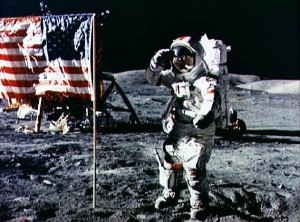U.S. Transportation Secretary Ray LaHood today announced two investigations designed to answer questions surrounding the issue of unintended vehicle acceleration.
LaHood also asked the U.S. Department of Transportation Inspector General to assess whether the NHTSA Office of Defects Investigation conducted an “adequate review” of complaints of alleged unintended acceleration reported to NHTSA from 2002 to the present.
The ongoing controversy of the problem in Toyota and other vehicles have led to numerous charges from critics that NHTSA is underfunded and improperly staffed to deal with safety matters. It appears particularly weak in the area of electronic controls and systems, as automakers continue to expand rapidly their use in all vehicles.
There are also charges that former NHTSA employees working for Toyota prevented thorough investigations and delayed safety recalls.
The independent National Academy of Sciences will examine the subject of unintended acceleration and electronic vehicle controls across the entire automotive industry. A panel of experts will review industry and government efforts to identify possible sources of unintended acceleration, including electronic vehicle controls, human error, mechanical failure and interference with accelerator systems. The study is expected to take 15 months. See The Case for “Black Box” Electronic Data Recorders
NAS experts will look at software, computer hardware design, electromagnetic compatibility and electromagnetic interference. The panel will make recommendations to NHTSA on how its rulemaking, research and defect investigation activities may help ensure the safety of electronic control systems in motor vehicles.
NASA Specifically on Toyota Issues
Separately, the National Highway Traffic Safety Administration, DOT’s vehicle safety agency, has enlisted NASA engineers with expertise in areas such as computer controlled electronic systems, electromagnetic interference and software integrity to help tackle the issue of unintended vehicle acceleration in Toyotas. At least 52 deaths are allegedly the result of the well-publicized problems and an ongoing series of recalls for Lexus and Toyota models.
“We are determined to get to the bottom of unintended acceleration,” says Secretary LaHood. “For the safety of the American driving public, we must do everything possible to understand what is happening. And that is why we are tapping the best minds around.”
The NHTSA review of the electronic throttle control systems in Toyotas is to be completed by late summer. NHTSA has brought in NASA engineers and other experts in subjects such as electromagnetic compatibility as part of a shorter-term review of the systems used in Toyota vehicles to determine whether they contain any possible flaws that would warrant a defect investigation.
DOT claims that NASA’s expertise in electronics, hardware, software, hazard analysis and complex problem solving ensures this review will be comprehensive. Currently there are nine experts from NASA assisting NHTSA, and additional personnel will join the team if needed.
It was revealed during Congressional hearings on Toyota unintended acceleration that NHTSA had only five electronics engineers on staff, and one software engineer.
Both studies – from the National Academy of Sciences and from NHTSA – will be peer reviewed by scientific experts. The total cost of the two studies is expected to come to approximately $3 million, including the cost of purchasing cars that have allegedly experienced unintended acceleration to be studied.
DOT’s Budget and Staffing Under Review
DOT has a huge budget, but little of the money is allocated to auto safety. Motor vehicles are responsible for 95% of the nation’s transportation deaths but only 1% of the Transportation budget. See Is NHTSA Underfunded in DOT’s $79 Billion Budget?
DOT’s IG will also determine whether ODI had the appropriate number of personnel and staff expertise to assess and address the technical issues raised by the complaints and whether the data was sufficient to identify specific defects that caused unintended acceleration. This will help DOT officials determine whether more resources are necessary for pursuing defect investigations.
“We are bringing the best minds and talents to resolve this issue,” said NHTSA Administrator David Strickland. “We will not rest until we have identified and addressed any potential vehicle-related causes of unintended acceleration.”

